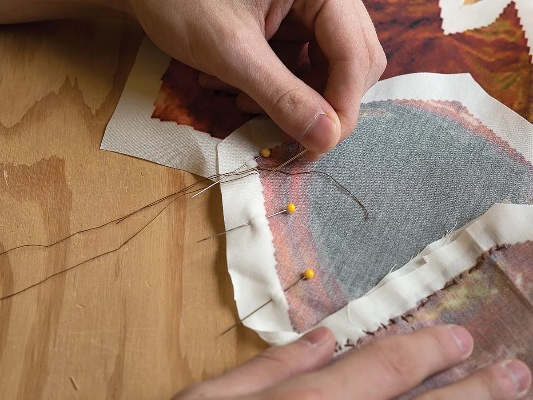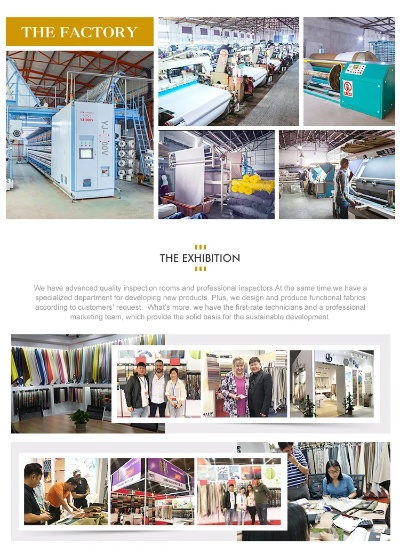A Guide to Risk Identification in Textile Industry
"This guide aims to provide a comprehensive overview of risk identification in the textile industry. It covers various aspects such as hazard identification, risk assessment, and risk control measures. The guide also provides practical examples and case studies to help textile industry professionals identify and manage risks effectively."
Introduction: The textile industry is a complex and dynamic sector, characterized by the high-quality and diverse nature of its products. It involves the production of various materials such as textiles, apparel, and other related products that are used for clothing, furnishings, and many other purposes. However, like any other industry, the textile industry also faces several risks that can impact its operations, quality, and profitability. In this article, we will discuss some of the common risks in the textile industry and how they can be identified and managed effectively.
Risk Identification:

-
Material Supply Risk: This risk arises when there is a shortage or delay in the supply of raw materials, such as cotton, polyester, and other textile fibers. This can lead to delays in production, reduced product quality, and increased costs. To identify this risk, companies should monitor their suppliers' performance and ensure that they have enough capacity to meet demand.
-
Quality Control Risk: This risk arises when there is a breakdown in the quality control process, resulting in defective products or poor quality output. This can lead to customer complaints, loss of reputation, and financial losses. To identify this risk, companies should establish strict quality control standards and regularly review their processes to identify and address any issues.
-
Environment and Health Risk: This risk arises when textile production activities cause environmental or health hazards. These risks include air pollution, water pollution, and exposure to toxic chemicals. To identify this risk, companies should comply with environmental regulations and conduct regular health assessments.
-
Financial Risk: This risk arises when the textile industry experiences economic downturns, inflation, or other market fluctuations. This can lead to reduced sales, increased costs, and decreased profits. To identify this risk, companies should monitor macroeconomic factors and develop contingency plans to mitigate potential financial losses.
-
Technological Risk: This risk arises when the textile industry adopts new technologies that may not be fully understood or implemented effectively. This can lead to reduced efficiency, increased costs, or decreased product quality. To identify this risk, companies should invest in research and development and regularly assess the effectiveness of new technologies.
Risk Management: To manage these risks effectively, companies should implement a comprehensive risk management strategy that includes the following steps:
-
Regular Risk Assessment: Companies should conduct regular risk assessments to identify potential risks and develop strategies to mitigate them. This can involve analyzing market trends, monitoring supplier performance, and evaluating environmental regulations.
-
Risk Mitigation Plans: Companies should develop risk mitigation plans that outline the actions they will take to minimize the impact of identified risks. These plans should be regularly reviewed and updated to reflect changing circumstances.
-
Contingency Planning: Companies should develop contingency plans that outline the actions they will take in the event of a crisis. These plans should be tested regularly to ensure they are effective and can be quickly implemented in the event of an actual crisis.
-
Training and Development: Companies should provide training and development opportunities to employees to ensure that they are aware of the risks associated with their work and can identify and respond to them effectively.
Case Study: One example of a successful risk management strategy in the textile industry is the case of a major textile company that was facing a significant supply chain risk due to a sudden increase in raw material prices. The company recognized the risk early on and developed a contingency plan that involved diversifying its supply sources and exploring alternative suppliers. They also invested in technology to improve their supply chain efficiency and reduce costs. As a result, the company was able to maintain stable prices and avoid any financial losses due to the supply chain risk.
Conclusion: In conclusion, identifying and managing risks in the textile industry is critical for ensuring sustainable growth and profitability. By implementing a comprehensive risk management strategy that includes regular risk assessments, risk mitigation plans, and contingency planning, companies can effectively manage potential risks and protect themselves against unforeseen challenges.

纺织品风险识别方法
风险识别流程
(1)收集信息:从市场调研、产品质量标准、行业标准、用户反馈等多个渠道收集纺织品相关信息。 (2)分析数据:运用数据分析工具对收集到的信息进行整理和分析,识别潜在风险点。 (3)制定风险评估标准:根据纺织品的特点和行业要求,制定风险评估标准。 (4)实施风险评估:根据制定的标准对纺织品进行风险评估。
案例分析
(1)案例一:某品牌纺织品质量不稳定
该品牌纺织品在生产过程中存在质量不稳定的问题,主要表现在面料手感不佳、色差较大等方面,通过收集相关数据,发现该问题可能与生产过程中的环境因素、工艺控制等因素有关。
(2)案例二:新型纺织材料的潜在风险
新型纺织材料在研发过程中可能存在技术风险、环保风险等,某些新型纤维可能存在过敏反应或环境影响问题,对此,企业需要关注相关法规动态,及时更新研发和生产策略。
纺织品风险识别要点
原材料风险
(1)供应商资质审查:对供应商的资质、产品质量、环保标准等方面进行审查。 (2)原材料质量检测:对原材料进行质量检测,确保原材料符合相关标准和要求。

生产过程风险
(1)生产设备维护:定期对生产设备进行维护和保养,确保设备正常运行。 (2)生产工艺控制:严格控制生产工艺,确保产品质量和一致性。
包装和运输风险
(1)包装材料选择:选择环保、安全的包装材料,确保产品安全运输。 (2)运输过程监控:对运输过程进行监控,防止产品受到损坏或污染。
纺织品风险识别实例说明
某品牌纺织品质量不稳定的风险识别
(1)信息收集:从市场调研中了解到该品牌纺织品在生产过程中存在质量问题,主要表现在面料手感不佳、色差较大等方面。 (2)数据分析:通过数据分析工具对收集到的信息进行整理和分析,发现生产环境因素、工艺控制等因素是导致该问题的主要原因,用户反馈也表明该品牌在产品质量方面存在一定的不足。 (3)风险评估标准制定:根据纺织品的特点和行业要求,制定出更加严格的质量标准和工艺控制要求,加强供应商管理,确保原材料的质量和安全性。 (4)实施风险评估:根据制定的标准对该品牌纺织品进行风险评估,发现存在一定程度的潜在风险,针对这些问题,企业需要采取相应的措施加以解决,确保产品质量和安全。
新型纺织材料的潜在风险识别
(1)新型纺织材料研发过程风险识别:关注新型纺织材料的研发过程和技术动态,及时发现潜在的技术风险和环保风险,加强与相关科研机构的合作,及时更新研发和生产策略。 (2)包装和运输风险实例:在选择包装材料时,应选择环保、安全的包装材料,确保产品安全运输,加强运输过程中的监控和管理,防止产品受到损坏或污染。
Articles related to the knowledge points of this article:
The Adventures of a Smart and Cheap Textile Brand 笨小孩纺织品
The Journey of Golden Beads:The Story of 金豆豆纺织品
The Definition amp;Application of Textiles in Jiading District,Shanghai



